As Respiratory time volume is the air volume at ambient pressure that is inhaled and exhaled per unit of time. Technically, it is the air throughput through the lungs per unit of time, which can be measured directly or calculated as the product of tidal volume and respiratory rate. The respiratory time volume varies greatly, depending on the performance requirements of the body and the ambient air pressure.
What is the tidal volume?

The respiratory time comprises the total volume of air that flows through the lungs per unit of time at ambient air pressure, i.e. is inhaled and exhaled. If minutes are selected as the time reference, the tidal volume is also displayed as Minute ventilation (AMV).
The size of the breathing time volume in healthy people is heavily dependent on the body's performance requirements, but also on the altitude and temperature. Basically, the adaptation to the needs of the body can be done by changing the tidal volume, the volume of a single breath, or by changing the breathing rate. As a rule, both parameters change unconsciously when the needs are adjusted. Normally the adjustment happens involuntarily via the autonomic nervous system.
In a resting position, the minute volume of a healthy adult person is approximately 8 to 10 liters. The value can be increased three to five times with heavy physical exertion. In well-trained top athletes, it can even increase up to fifteen times.
The maximum utilization of the tidal volume at the maximum frequency corresponds to the so-called breathing limit value. It can be achieved through voluntary, conscious breathing and can be increased within certain limits by training the chest and rib muscles.
Function & task
The respiratory time volume, the air throughput through the lungs, is the most important control variable for adapting the oxygen supply to the body's needs. Too high a respiratory time volume that can be achieved through hyperventilation leads to an oversupply of oxygen, which causes typical symptoms and dangerous to life-threatening conditions. The opposite, too, is the lack of oxygen, which can occur due to hypoventilation or too little oxygen in the air, leads to typical symptoms and life-threatening conditions.
In healthy people, the breathing time volume is controlled unconsciously by the breathing center, a special region in the central nervous system in the elongated medulla, the medulla oblongata. The respiratory center receives messages about the partial pressure of oxygen (O2) and carbon dioxide (CO2) as well as the pH value of the blood via chemoreceptors located at certain points in the bloodstream. These are the three most important parameters that enable the respiratory center to control the respiratory time volume in such a way that the aforementioned parameters are as constantly as possible within the normal range.
However, the control of the breathing time volume is not the only adjustment possibility for the body. When the muscle tissue demands a great deal of oxygen, the body also reacts with an increased cardiac output in order to support the uptake of oxygen and the release of carbon dioxide through increased blood circulation in the capillaries that span the alveoli.
A particular challenge for the control of the respiratory time volume is not only in the case of an extraordinary performance requirement, but also in unusual environmental conditions such as e.g. B. are found at great heights. The air pressure decreases with increasing altitude. At 4,810 m above sea level (Mt. Blanc) it is only 53.9% of the air pressure at sea level. This means that with the same respiratory time volume, only a little more than half of the oxygen is available that would be available at sea level.
When staying for several weeks at high altitudes, the body also reacts with an increase in red blood cells (erythrocytes) in order to support the gas exchange on the walls of the capillaries (altitude training).
You can find your medication here
➔ Medication for shortness of breath and lung problemsIllnesses & ailments
The involuntary control of the respiratory time volume and the adjustment to the oxygen demand within narrow tolerance limits requires that the chemoreceptors involved correctly supply the respiratory center in the medulla oblongata with data on the oxygen and carbon dioxide concentration and the pH value of the blood.
Another prerequisite for correct control is that the respiratory center sends the appropriate contraction and relaxation commands to the respiratory muscles. Further conditions for a needs-based regulation of the respiratory time volume are normal airway resistance without ventilation disturbances and the functionality of the gas exchange in the capillaries of the alveoli. Of course, the atmospheric environment in terms of oxygen content and ambient pressure must also be within the limits that the breathing center can still control with regard to controlling breathing.
Causes that can lead to temporary or chronic hyperventilation are certain lung diseases or disorders of the respiratory center. The function of the respiratory center can be impaired by a traumatic brain injury or a circulatory disorder in the respiratory center - for example, a stroke or severe anxiety or stressful situations. With persistent hyperventilation, an increase in the respiratory time volume beyond the need, there is an increased exhalation of carbon dioxide. Typically, muscle cramps, dizziness, and feelings of fear arise. Paresthesias such as numbness or incorrect sensory impressions of the skin receptors and paralysis, muscle tremors and muscle pain are just as typical. The symptoms are triggered by a respiratory alkalosis, an increase in the pH value, which leads to a decrease in calcium ions in the blood (hypocalcemia).
The opposite disorder, the reduction in respiratory time volume due to hypoventilation, can also have many different causes. The most common trigger factors are obstructive pulmonary diseases such as bronchial asthma or an influence on the respiratory center by opioid drugs or partial motor failure of the respiratory muscles (paresis).
The so-called Pickwick syndrome occurs with pronounced obesity. Excessive fat tissue in the abdomen and chest leads to an elevated diaphragm and, associated with this, to external compression of the lungs. This triggers chronic hypoventilation, which, due to the increased carbon dioxide concentration, leads to over-acidification of the blood.



.jpg)

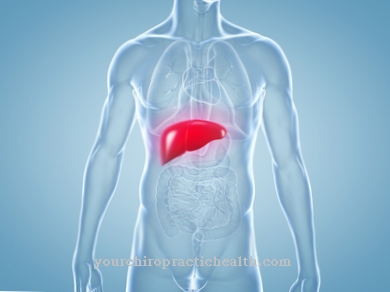
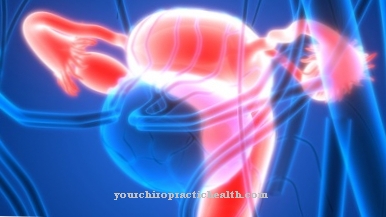






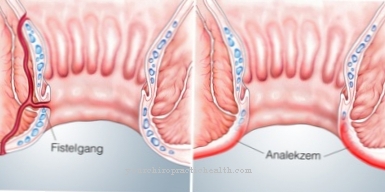

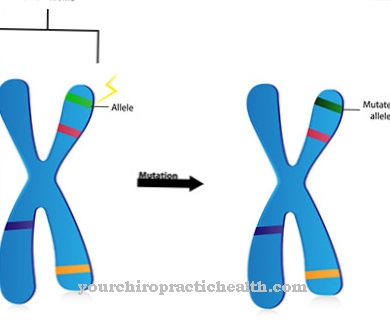
.jpg)




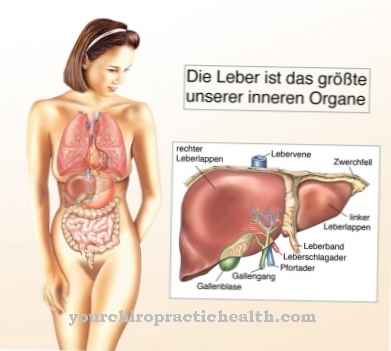

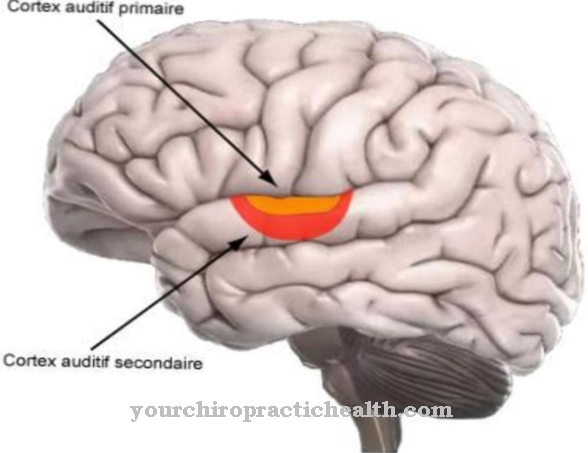
.jpg)



